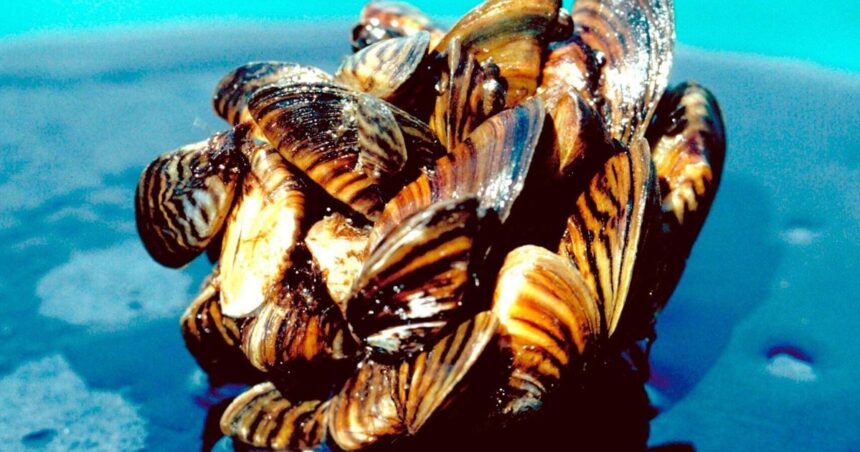Cleaning your fishing equipment with hot water could save Montana millions of dollars, according to Montana Fish, Wildlife and Parks officials.
Tayler Templin, Northwest Area AIS supervisor for Montana Fish, Wildlife and Parks, briefed area residents on the dangers of invasive species and some of the ways that Montanans can avoid accidently assisting in their invasion at an informational meeting at the Elk’s Lodge in Hamilton hosted by Bitterroot Trout Unlimited on Thursday night.
“There’s a lot going on regionally with AIS,” Templin said. “I’m sure some of you know that in 2023 there was a mussel detection in the Snake River, which is the first time mussels have been detected in the Columbia River basin.”
A group of zebra mussels, already considered one of the “world’s worst” invaders.
A small number of quagga mussels were discovered in the Snake River in September of 2023, according to the Idaho State Department of Agriculture. Mussels are considered one of the most insidious invasive species by Montana Fish, Wildlife and Parks because of their incredible resilience and pervasive nature.
People are also reading…
“Huge deal,” Templin said. “Mussels are kind of the poster child for AIS and so that’s where we spend a lot of our focus.”
Quagga and zebra mussels are particularly dangerous invasive species because of their large population sizes that can spread like blankets over lake beds, ingesting disproportionate amounts of water nutrients and clogging man-made water intakes.
“It’s better to keep mussels out of our systems because right now our programs cost $3 million a year,” Templin said. “If we got mussels into Montana waters, it would cost about $26 million a year to take care of and implement mitigation.”
Invasive mussel species, like the quagga and zebra, have already infiltrated numerous large bodies of water within the U.S.
Zebra mussels, which are indigenous to Ukraine, spread in the Great Lakes in the 1980s after hitching rides on the hulls of European ships, according to USGS.





